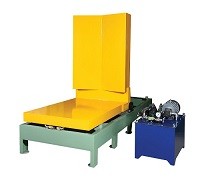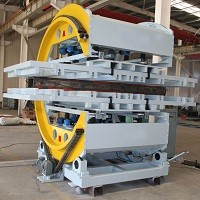Enhancing Safety and Efficiency: Understanding Hydraulic Tilters for Steel Coils
In modern metal processing and fabrication environments, handling heavy steel coils safely and efficiently is paramount. Rotating these massive coils between horizontal and vertical orientations is a common requirement for storage, transport, and feeding production lines. The hydraulic tilter for steel coils, often referred to as a coil upender or downender, is a critical piece of equipment designed specifically for this task. This article explores the function, benefits, and key considerations for utilizing hydraulic coil tilters in your operations.
Overview of Tilter Types
Different industrial applications require various tilting solutions. Here's a quick look at related equipment:
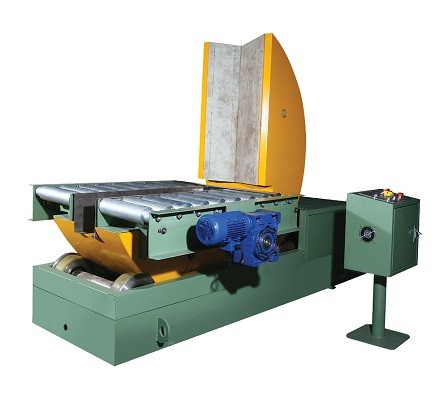 |
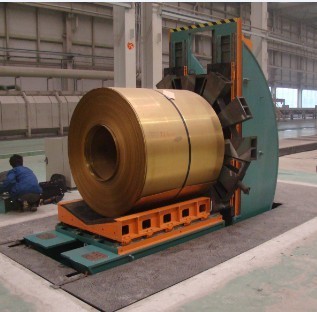 |
Mould Tilter & Upender |
Coil Tilter& Upender |
 |
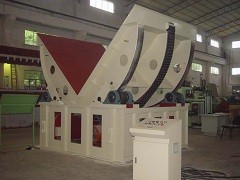 |
Coil Upender/tilter |
Spool/Drum Tilter |
|
|
|
Hydraulic Upender/Tilter |
Load Inverters |
How Hydraulic Coil Tilters Operate
Hydraulic tilters utilize pressurized hydraulic fluid to power cylinders that actuate a platform or cradle assembly. The typical operation involves:
- Loading: A steel coil is placed onto the tilter's platform, often using a forklift or overhead crane. The coil might be horizontal (eye-to-the-sky) or vertical (eye-to-the-horizon), depending on the starting orientation and the machine's purpose (upending or downending).
- Securing (Optional): Depending on the design and coil stability, clamps or specialized cradles (like V-saddles) may help secure the load.
- Tilting: The operator initiates the tilting cycle via a control panel or pendant. Hydraulic cylinders extend or retract, smoothly rotating the platform, typically through 90 degrees.
- Unloading: Once the coil reaches the desired orientation, it can be safely removed from the platform.
The hydraulic system provides significant lifting force and precise control, making it ideal for handling heavy and unwieldy steel coils.

Key Features and Components of Hydraulic Tilters
When evaluating hydraulic tilters, consider these essential elements:
- Load Capacity: Ranging from a few tons to over 50 tons, capacity must match the heaviest coils handled.
- Platform Design: Platforms can be flat, feature a V-saddle to cradle coils, or include integrated conveyors for automated lines. Size must accommodate the maximum coil diameter and width.
- Hydraulic Power Unit (HPU): Consists of a motor, pump, reservoir, valves, and filters. The HPU's specifications determine the tilter's speed and power.
- Control System: Can range from simple push-button pendants to sophisticated PLC (Programmable Logic Controller) systems integrated with other machinery.
- Safety Features: Crucial elements include hydraulic locking valves (to prevent platform drift), emergency stops, physical guarding or light curtains, limit switches to control travel, and overload protection.
Applications in Steel Coil Handling
Hydraulic tilters are indispensable in various stages of steel processing and manufacturing:
- Receiving and Storage: Tilting coils from a horizontal shipping orientation to a vertical storage position (or vice-versa).
- Processing Lines: Positioning coils correctly (typically eye-to-the-horizon) for feeding into slitters, cut-to-length lines, stamping presses, or roll formers.
- Material Transfer: Safely changing coil orientation between different handling equipment (e.g., from a C-hook lift to a coil car).

hydraulic upender 10t Benefits of Implementing Hydraulic Coil Tilters
Integrating hydraulic tilters into your workflow offers significant advantages:
- Enhanced Safety: Drastically reduces the risks associated with manually attempting to reorient heavy coils or using inadequate equipment like forklifts or cranes alone. This helps comply with safety regulations like those outlined by OSHA (Occupational Safety and Health Administration).
- Improved Efficiency: Speeds up the handling process compared to manual methods, minimizing downtime and keeping production lines fed.
- Coil Protection: Ensures smooth, controlled movement, preventing damage to coil edges or surfaces that can occur with improper handling.
- Versatility: Can handle a wide range of coil sizes and weights. Many designs can be customized for specific needs.
- Automation Integration: Easily integrates into automated coil processing lines, reducing manual intervention.

hydraulic tilter and upender for turning3 Selecting the Right Hydraulic Tilter
Choosing the appropriate hydraulic tilter requires careful consideration of operational needs:
- Maximum Coil Weight and Dimensions: Ensure the tilter's capacity and platform size exceed your largest coil specifications.
- Required Tilt Angle: Most common is 90 degrees, but other angles might be needed for specific tasks.
- Duty Cycle: How frequently will the tilter operate? Heavy-duty cycles require more robust components.
- Operating Environment: Consider space constraints (floor-mounted vs. pit-mounted designs) and environmental factors.
- Control Requirements: Determine the level of control needed – manual pendant, remote control, or full automation integration.
- Safety Standards: Ensure the equipment meets or exceeds relevant industry safety standards.
Maintenance and Safe Operation
Regular maintenance is vital for the longevity and safe operation of hydraulic tilters. Key practices include:
- Inspecting hydraulic hoses and fittings for leaks or wear.
- Checking hydraulic fluid levels and quality.
- Lubricating moving parts as per manufacturer recommendations.
- Testing safety features (e-stops, limit switches) regularly.
- Ensuring operators are properly trained on safe operating procedures.
Conclusion
Hydraulic tilters are essential tools for safe and efficient steel coil handling in the metal fabrication and processing industries. By carefully selecting a unit that matches operational requirements and implementing proper maintenance and safety protocols, businesses can significantly reduce handling risks, protect valuable materials, and optimize workflow efficiency. Investing in the right coil tilting solution is an investment in a safer and more productive operation.# Enhancing Safety and Efficiency: Understanding Hydraulic Tilters for Steel Coils
In modern metal processing and fabrication environments, handling heavy steel coils safely and efficiently is paramount. Rotating these massive coils between horizontal and vertical orientations is a common requirement for storage, transport, and feeding production lines. The hydraulic tilter for steel coils, often referred to as a coil upender or downender, is a critical piece of equipment designed specifically for this task. This article explores the function, benefits, and key considerations for utilizing hydraulic coil tilters in your operations.
Overview of Tilter Types
Different industrial applications require various tilting solutions. Here's a quick look at related equipment:
 |
 |
Mould Tilter & Upender |
Coil Tilter& Upender |
 |
 |
Coil Upender/tilter |
Spool/Drum Tilter |
|
|
|
Hydraulic Upender/Tilter |
Load Inverters |
How Hydraulic Coil Tilters Operate
Hydraulic tilters utilize pressurized hydraulic fluid to power cylinders that actuate a platform or cradle assembly. The typical operation involves:
- Loading: A steel coil is placed onto the tilter's platform, often using a forklift or overhead crane. The coil might be horizontal (eye-to-the-sky) or vertical (eye-to-the-horizon), depending on the starting orientation and the machine's purpose (upending or downending).
- Securing (Optional): Depending on the design and coil stability, clamps or specialized cradles (like V-saddles) may help secure the load.
- Tilting: The operator initiates the tilting cycle via a control panel or pendant. Hydraulic cylinders extend or retract, smoothly rotating the platform, typically through 90 degrees.
- Unloading: Once the coil reaches the desired orientation, it can be safely removed from the platform.
The hydraulic system provides significant lifting force and precise control, making it ideal for handling heavy and unwieldy steel coils.
Key Features and Components of Hydraulic Tilters
When evaluating hydraulic tilters, consider these essential elements:
- Load Capacity: Ranging from a few tons to over 50 tons, capacity must match the heaviest coils handled.
- Platform Design: Platforms can be flat, feature a V-saddle to cradle coils, or include integrated conveyors for automated lines. Size must accommodate the maximum coil diameter and width.
- Hydraulic Power Unit (HPU): Consists of a motor, pump, reservoir, valves, and filters. The HPU's specifications determine the tilter's speed and power.
- Control System: Can range from simple push-button pendants to sophisticated PLC (Programmable Logic Controller) systems integrated with other machinery.
- Safety Features: Crucial elements include hydraulic locking valves (to prevent platform drift), emergency stops, physical guarding or light curtains, limit switches to control travel, and overload protection.
Applications in Steel Coil Handling
Hydraulic tilters are indispensable in various stages of steel processing and manufacturing:
- Receiving and Storage: Tilting coils from a horizontal shipping orientation to a vertical storage position (or vice-versa).
- Processing Lines: Positioning coils correctly (typically eye-to-the-horizon) for feeding into slitters, cut-to-length lines, stamping presses, or roll formers.
- Material Transfer: Safely changing coil orientation between different handling equipment (e.g., from a C-hook lift to a coil car).
Benefits of Implementing Hydraulic Coil Tilters
Integrating hydraulic tilters into your workflow offers significant advantages:
- Enhanced Safety: Drastically reduces the risks associated with manually attempting to reorient heavy coils or using inadequate equipment like forklifts or cranes alone. This helps comply with safety regulations like those outlined by OSHA (Occupational Safety and Health Administration).
- Improved Efficiency: Speeds up the handling process compared to manual methods, minimizing downtime and keeping production lines fed.
- Coil Protection: Ensures smooth, controlled movement, preventing damage to coil edges or surfaces that can occur with improper handling.
- Versatility: Can handle a wide range of coil sizes and weights. Many designs can be customized for specific needs.
- Automation Integration: Easily integrates into automated coil processing lines, reducing manual intervention.
Selecting the Right Hydraulic Tilter
Choosing the appropriate hydraulic tilter requires careful consideration of operational needs:
- Maximum Coil Weight and Dimensions: Ensure the tilter's capacity and platform size exceed your largest coil specifications.
- Required Tilt Angle: Most common is 90 degrees, but other angles might be needed for specific tasks.
- Duty Cycle: How frequently will the tilter operate? Heavy-duty cycles require more robust components.
- Operating Environment: Consider space constraints (floor-mounted vs. pit-mounted designs) and environmental factors.
- Control Requirements: Determine the level of control needed – manual pendant, remote control, or full automation integration.
- Safety Standards: Ensure the equipment meets or exceeds relevant industry safety standards.
Maintenance and Safe Operation
Regular maintenance is vital for the longevity and safe operation of hydraulic tilters. Key practices include:
- Inspecting hydraulic hoses and fittings for leaks or wear.
- Checking hydraulic fluid levels and quality.
- Lubricating moving parts as per manufacturer recommendations.
- Testing safety features (e-stops, limit switches) regularly.
- Ensuring operators are properly trained on safe operating procedures.
Conclusion
Hydraulic tilters are essential tools for safe and efficient steel coil handling in the metal fabrication and processing industries. By carefully selecting a unit that matches operational requirements and implementing proper maintenance and safety protocols, businesses can significantly reduce handling risks, protect valuable materials, and optimize workflow efficiency. Investing in the right coil tilting solution is an investment in a safer and more productive operation.
